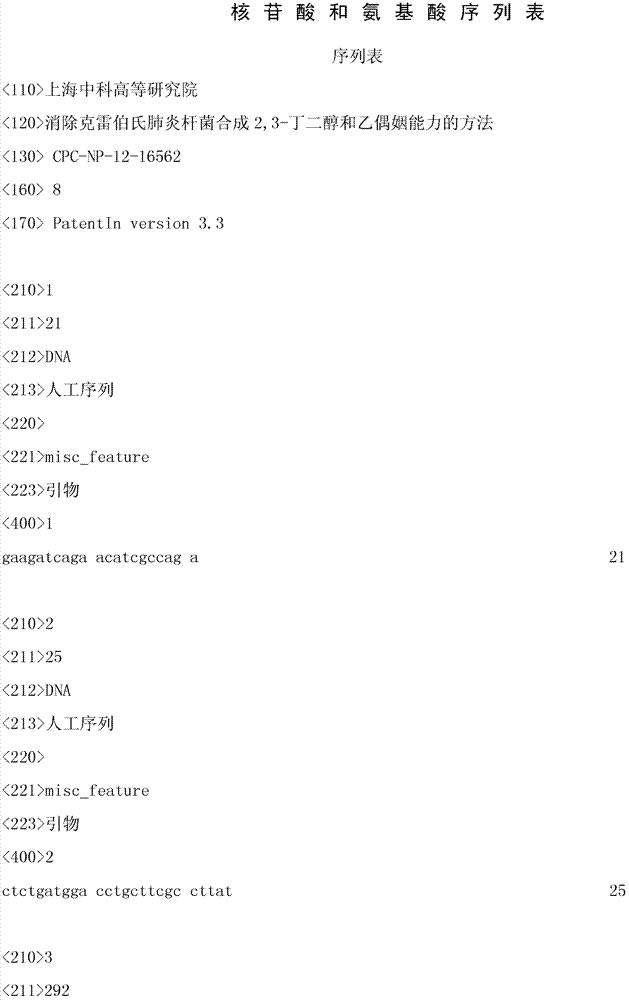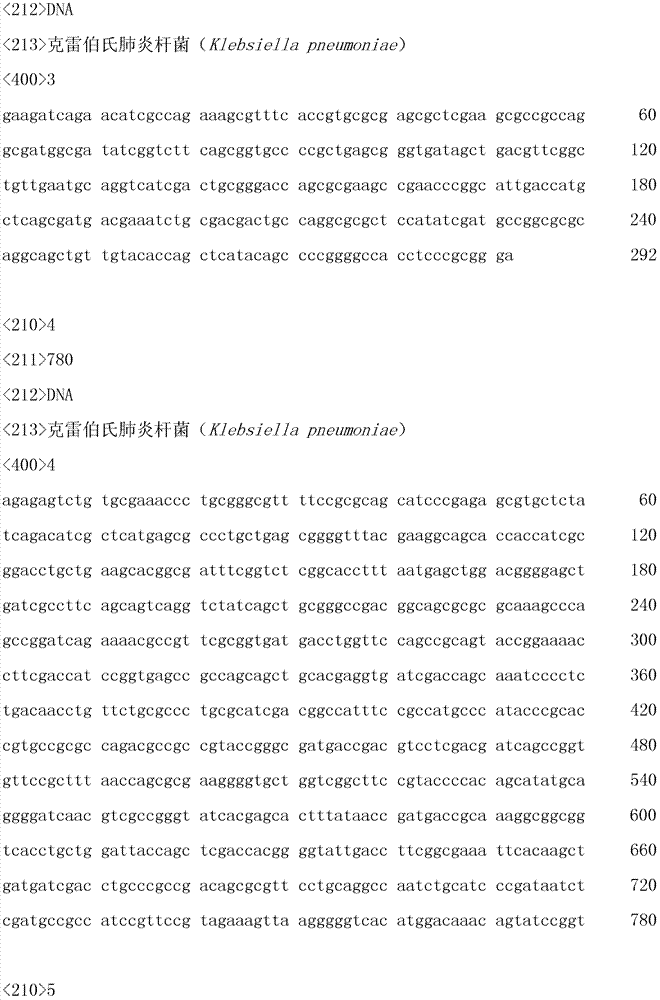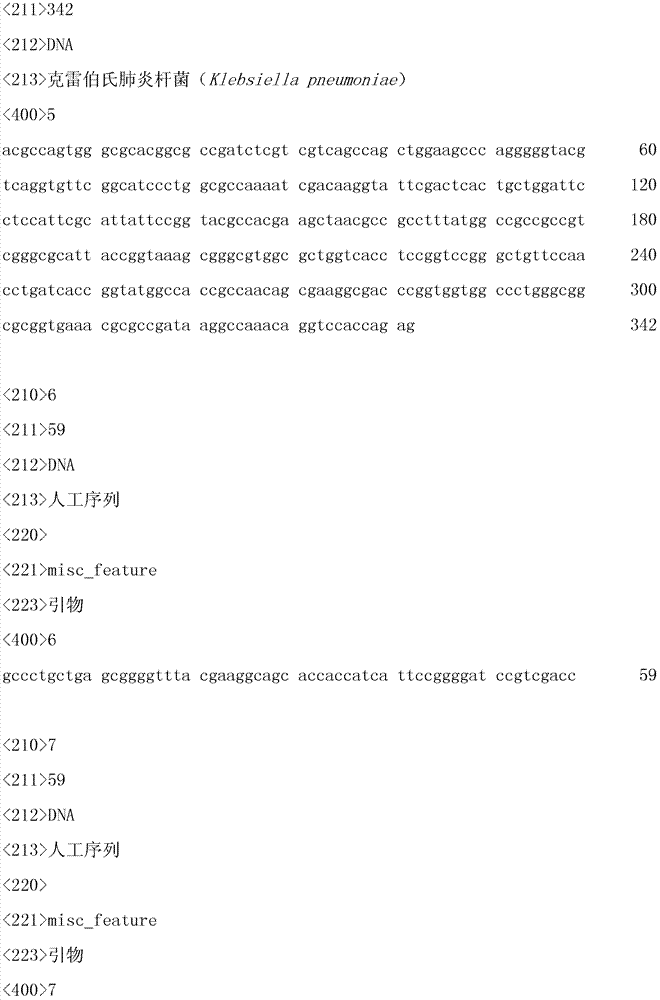Method for eliminating capability of klebsiella pneumoniae in synthesizing 2,3-butanediol and acetoin
A technology of Klebsiella pneumoniae and acetoin, which is applied in the field of eliminating the synthesis of Klebsiella pneumoniae 2, and can solve the problem that the synthesis ability of Klebsiella pneumoniae has not been eliminated.
- Summary
- Abstract
- Description
- Claims
- Application Information
AI Technical Summary
Problems solved by technology
Method used
Image
Examples
Embodiment 1
[0017] Embodiment 1 eliminates the method for Klebsiella pneumoniae CGMCC1.6366 synthetic 2,3-butanediol and acetoin ability
[0018] The CGMCC1.6366 strain in this example is preserved by the China General Microorganism Culture Collection and Management Center, and has ampicillin resistance.
[0019] The method for eliminating the ability of Klebsiella pneumoniae CGMCC1.6366 to synthesize 2,3-butanediol and acetoin in the present embodiment, the specific steps are as follows:
[0020] 1. Utilize PCR to amplify Klebsiella pneumoniae acetolactate decarboxylase gene (budA), connect to the cloning vector by TA cloning method, and carry out DNA sequence determination.
[0021] According to Klebsiella pneumoniae MGH78578 (Genbank: CP000647) genome information, design acetolactate decarboxylase PCR primers, upstream primer budA-s: GAAGATCAGAACATCGCCAGA (shown in SEQ ID NO.1), downstream primer budA-a: CTCTGATGGACCTGCTTCGCCTTAT (SEQ ID NO.2 shown).
PUM
 Login to View More
Login to View More Abstract
Description
Claims
Application Information
 Login to View More
Login to View More - R&D
- Intellectual Property
- Life Sciences
- Materials
- Tech Scout
- Unparalleled Data Quality
- Higher Quality Content
- 60% Fewer Hallucinations
Browse by: Latest US Patents, China's latest patents, Technical Efficacy Thesaurus, Application Domain, Technology Topic, Popular Technical Reports.
© 2025 PatSnap. All rights reserved.Legal|Privacy policy|Modern Slavery Act Transparency Statement|Sitemap|About US| Contact US: help@patsnap.com



